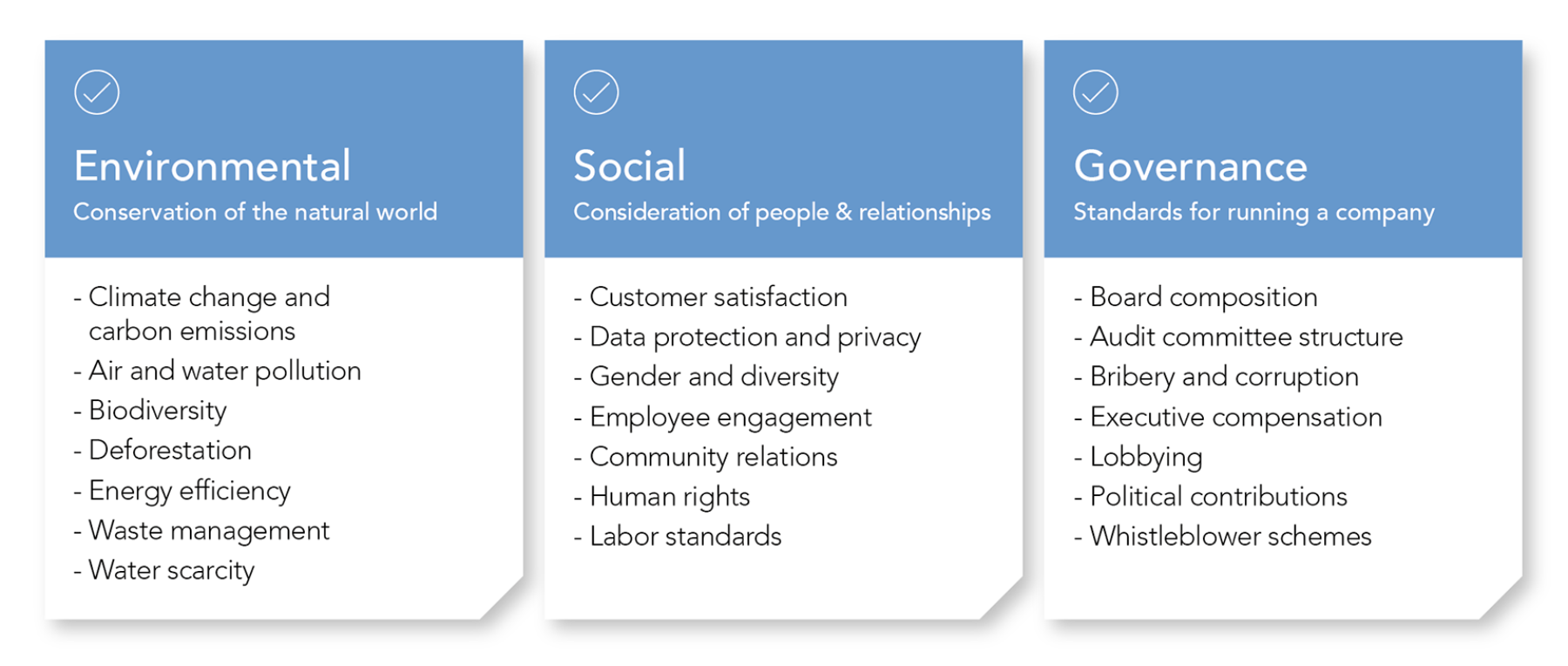As firms navigate the evolving landscape of the ethical, social and governance implications of climate change, they are presented with opportunities and challenges. By incorporating climate change modelling into their strategies, firms can attract socially responsible investors and align their activities with global sustainability goals. However, they must also address the associated risks, such as regulatory compliance, reputation management, and exposure to climate-related financial impacts.
The integration of ESG factors into credit risk functions is reshaping the way financial institutions assess and manage credit risks. This evolution goes beyond traditional financial metrics, recognising the significant impact that ESG considerations can have on the creditworthiness and performance of borrowers. Classification varies, but there is considerable consensus over many areas (Figure 1).

An overview of the key stages in this evolution:
Raising awareness and understanding: Acknowledging the relevance and potential repercussions of ESG factors on credit risk is now paramount.
Integrating ESG factors: The next phase integrates ESG factors into credit risk analysis, assessing their impact on creditworthiness.
Empowering with data and analytics: This stage focuses on bolstering data collection, analysis, and integration capabilities partnering with data providers offering robust ESG insights and developing analytical models to gauge the influence of ESG factors on credit risk with greater precision.
Quantifying risk assessment: Framework development becomes central as Credit Risk functions transition to evaluating and quantifying ESG-related credit risk, systematically assessing the credit risk associated with ESG factors and culminating in informed credit decision-making processes.
Mitigating risk and shaping terms: ESG integration shapes lending terms and pricing, fostering sustainability with instruments like green bonds and sustainability-linked loans.
Sustaining vigilance – monitoring and reporting: Transparent reporting on ESG-related credit risks, mitigation strategies, and portfolio-level ESG exposure caters to the needs of stakeholders, regulators, and investors.
The power of collaboration: The synergy between Credit Risk functions, ESG teams, and other stakeholders ensures a comprehensive grasp of ESG factors, uniform risk assessment methodologies, and the seamless integration of ESG considerations into credit risk management practices.
ESG integration transforms credit risk functions, enriching management practices. Financial institutions embracing this evolution envision a future where credit decisions align with environmental stewardship, social responsibility, and effective governance principles.
Calibrating models
As the financial industry gains a better grasp of the financial effects of ESG factors, it becomes imperative to adjust models used in diverse financial analyses to incorporate these insights. Several factors should be taken into consideration when calibrating these models:
Risk factors and correlations: Empirical research and analysis is necessary to pinpoint the specific ESG factors that materially affect financial outcomes.
Scenario analysis and stress testing: Calibrating models to encompass the financial ramifications of ESG factors might involve integrating scenario analysis and stress testing.
Valuation and discount rates: Model calibration may entail adapting valuation methodologies to mirror the financial consequences of ESG factors.
Long-term perspective and materiality: Model calibration should factor in appropriate time horizons and acknowledge the materiality of diverse ESG factors.
Calibrating models to account for the financial repercussions of ESG factors demands a multidisciplinary approach, necessitating collaboration among data scientists, risk managers, financial analysts, and ESG specialists. By integrating the financial implications of ESG into models, organisations can make more precise and well-informed decisions and bolster risk management practices alongside sustainable investment strategies.
By aligning front office and enterprise risk functions, integrating ESG considerations, and adapting to regulatory shifts, financial organisations can navigate the complexities of the modern landscape while contributing to a sustainable and resilient future.
Thriving in the ESG era
The financial sector’s response to ESG challenges requires a holistic approach that fuses innovation with responsibility. Front office and enterprise risk functions hold the dual responsibility of seizing ESG opportunities and addressing complexities in climate change mitigation. Collaboration, data-driven insights, and strategic alignment between these functions is crucial to navigate the multifaceted ESG landscape successfully. By aligning front office and enterprise risk functions, integrating ESG considerations, and adapting to regulatory shifts, financial organisations can navigate the complexities of the modern landscape while contributing to a sustainable and resilient future.
Quantifi: Support for ESG
With Quantifi, clients can leverage pre-built stress tests or create customised scenarios reflecting ESG risk factor metrics. With access to real-time, historical, and custom reporting, you can create a single view of your ESG risk. Full transparency is achieved with interactive drilldown, slicing and aggregation across all data to accurately monitor risk on a portfolio and incremental basis to evaluate portfolio impact.
Quantifi also supports ESG ratings and other related criteria for custom credit scoring to allow rapid and systematic incorporation of entity exposures for direct lending, counterparty credit exposures and XVA.
